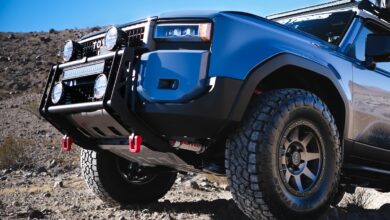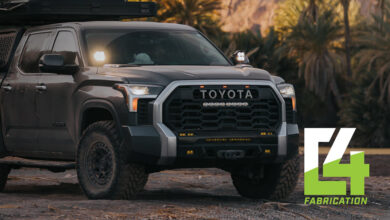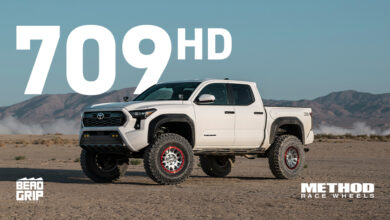Upgrading Wheels & Tires? Don’t Make The Brake Mistake
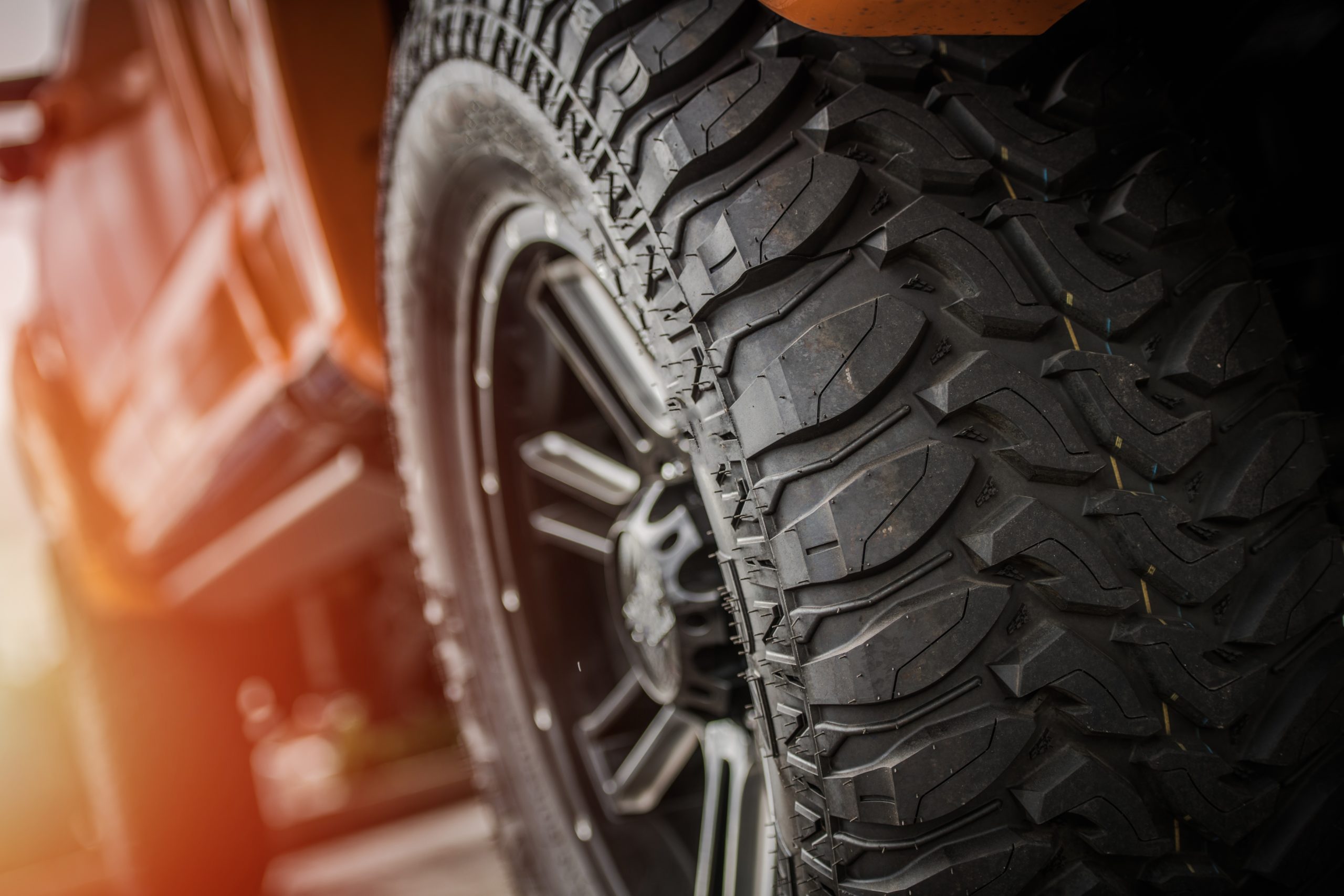
As trucks and SUVs make up a larger share of the new-vehicle market, wheel and tire upgrades are more popular than ever. Indeed, as Modern Tire Dealer reports, large diameter wheel and tire sales are a bright spot in the industry.
While this is great news for off-road shops selling wheel and tire upgrades for trucks and SUVs, there’s a problem: Most new vehicle brake systems perform substantially worse with upgraded wheels and tires. Recognizing this problem is the key to both helping the customer be safe and reducing the risk of a lawsuit.
OE Brake Systems Are Designed for OE Wheels & Tires
OE brake systems are designed to stop a set of OE wheels and tires. While most OE brake systems are fairly robust, aftermarket wheels and tires can reduce their performance substantially.
- Most aftermarket wheels are heavier than the OEM wheels they replace. OEM wheels are manufactured to be strong yet lightweight, because lighter wheels improve fuel economy. Most aftermarket wheels, on the other hand, are not designed with weight in mind. As a result, they can be much heavier than a similar sized OE wheel
- Aftermarket tires are usually heavier than OE tires too. While upgrading OE tires is usually a great idea, most aftermarket truck and SUV tires weigh more than the OE tires they replace
- When the wheels and tires are heavier, the vehicle is harder to stop. The more a wheel and tire weighs, the harder a vehicle is to stop
- Bigger wheel and tire combos take more force to stop. Last but not least, when you increase the overall diameter of the wheel and tire, you decrease brake system performance even more.
Consider a brand new 17″ x 7.5″ OE alloy wheel for a Jeep Wrangler, wearing a 245/75R17 all-season tire. On average, this combo weighs about 55 pounds. A popular replacement for this OE wheel is an 18″ x 9″ aftermarket wheel, which will weigh anywhere from 32-40 pounds. A 255/65R18 all-terrain tire for this wheel can weigh 35-40 pounds, which makes the combo weigh 70-75 pounds (or more).
When wheel and tire weight is increased 30-35 percent like this, the vehicle doesn’t stop as well. Some simple math shows that even a slight increase in wheel and tire weight or size can have a big impact on braking distance. These changes also increase pedal effort, brake pad wear, and even the amount of dust the brake pads generate.
About This Sponsored Content
BeefedUpBrakes.com is a start-up producing brake system components specifically designed for trucks and SUVs with oversized wheels and tires. Because of the unique requirements of vehicles with oversized wheels and tires, BeefedUpBrakes are offered in both trail and towing configurations. Learn more at beefedupbrakes.com.
Don’t Sell Wheels Without Talking About Brakes
If your shop installs a set of wheels and tires on a customer’s vehicle and those wheels are both larger and heavier than stock, someone should try and sell that customer a brake system upgrade. The fact is, a set of oversized wheels and tires can increase stopping distances significantly, making the vehicle a little less safe. The customer deserves the chance to restore the brake performance they’ve lost, and often customers aren’t savvy enough to realize that their upgraded wheels and tires are going to impact their braking performance.
Asking every customer about brake system upgrades has three benefits:
- At the very least, the customer is going to be more cautious when driving their vehicle
- If the customer comes back to your shop and complains about their brakes, demands a fix, etc., your staff can remind them that a brake system upgrade was suggested
- Some of your customers will decide to buy a brake system upgrade, increasing shop revenue
Not to mention, if your shop offers a brake system upgrade to every customer that buys a set of aftermarket wheels and tires, you’re reducing your odds of a legal problem. If a customer decides to sue your shop because they didn’t realize their brake system performance was degraded, you can point out that they didn’t buy the brake upgrades your shop suggested.
Offer Brake Upgrades on a Menu with Good, Better & Best Options
Sometimes, shop salespeople are reluctant to pitch add-ons once a sale is made. If the customer just said yes to $5,000 worth of upgrades, your salesperson may not want to try and sell an add-on. So, rather than asking your salespeople to sell a brake upgrade, give every customer a brake system upgrade menu.
After the customer says yes to a set of wheels and tires, your salesperson can ask the customer to take a look at a menu listing three brake system upgrade options:
- A good option, which might be an upgraded set of brake pads (ideally, you want to offer brake pads designed for big wheels and tires)
- A better option, which might be a combination of new rotors and pads
- A best option, which might be a big brake kit
Oftentimes, customers will choose something off of a menu reflexively. If the customer sees that they can improve their brake system for just a few hundred dollars more than they’re already spending, they might be inclined to say yes.
But even if the customer decides not to do anything with their brakes, a copy of the menu can be kept in their file. That way, there’s a record of a discussion about brake system performance, along with proof that a brake system upgrade was suggested.
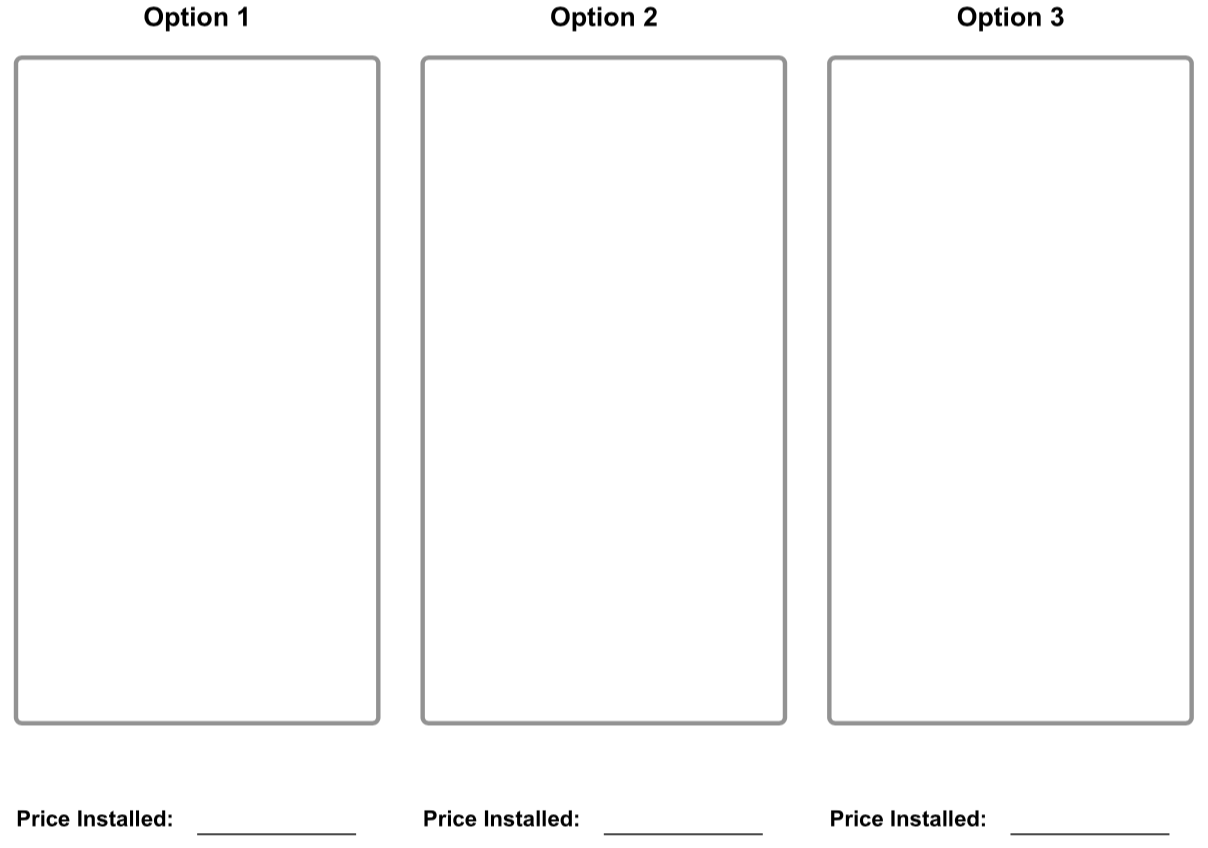
Sample of a Good, Better, Best Option Menu.
Sell Aftermarket Wheels & Tires with Safety in Mind
As trucks and SUVs become more popular, demand for upgraded wheels and tires is only going to grow. Because many aftermarket wheels and tires are significantly heavier than the stock wheels and tires they replace, customers who buy an upgrade should be warned about reduced brake system performance.
Shops can warn their customers about brake system performance by talking about a brake system upgrade. Not only does offering the customer an upgrade help address the problem, it also helps prove that your shop is putting safety first.
